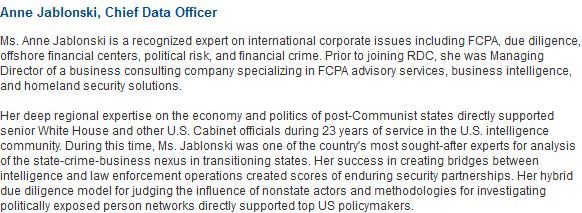Quoting the Pope, James Carroll writes: “Who am I to judge?” With those five words, spoken in late July in reply to a reporter’s question about the status of gay priests in the Church, Pope Francis stepped away from the disapproving tone, the explicit moralizing typical of Popes and bishops. This gesture of openness, which startled the Catholic world, would prove not to be an isolated event. In a series of interviews and speeches in the first few months after his election, in March, the Pope unilaterally declared a kind of truce in the culture wars that have divided the Vatican and much of the world. Repeatedly, he argued that the Church’s purpose was more to proclaim God’s merciful love for all people than to condemn sinners for having fallen short of strictures, especially those having to do with gender and sexual orientation. His break from his immediate predecessors—John Paul II, who died in 2005, and Benedict XVI, the traditionalist German theologian who stepped down from the papacy in February—is less ideological than intuitive, an inclusive vision of the Church centered on an identification with the poor. From this vision, theological and organizational innovations flow. The move from rule by non-negotiable imperatives to leadership by invitation and welcome is as fundamental to the meaning of the faith as any dogma.
Of the world’s 1.2 billion Catholics, about forty-one per cent live in Latin America. Catholicism has declined in Europe and the United States, but the pews of churches throughout the developing world are crowded. The election by the College of Cardinals of the first Latin-American Pope is a signal of the Church’s demographic pivot. Francis’s place of origin alone would make him a historic figure, but the statements he has made, and the example he has set, with gestures of modesty and compassion, show a man determined to realign the vast institution with the core message of Jesus.
Late last month, Francis issued the first major declaration of his pontificate, an “apostolic exhortation,” a long document addressed to Catholics which covers a range of issues. Titled “The Joy of the Gospel” and reflecting Francis’s style — there is no pontifical “we” — the exhortation is unrelentingly positive in tone. Francis writes, “We want to enter fully into the fabric of society, sharing the lives of all, listening to their concerns, helping them materially and spiritually in their needs, rejoicing with those who rejoice, weeping with those who weep; arm in arm with others, we are committed to building a new world.”
Time magazine’s choice of Pope Francis as “Person of the Year” provoked some indignant reactions from those who felt that the award should have gone to Edward Snowden. After all, it was hard to dispute that Snowden had gained much greater media prominence around the world in 2013.
While the argument is in many ways petty — after all, it’s not about an accolade that is of any lasting significance — the contrast between the two newsmakers is useful in as much as it provides an opportunity for reflection about the issues that most profoundly affect humanity.
In an open letter, Snowden writes that “the surveillance of whole populations without any suspicion of wrongdoing … threatens to become the greatest human rights challenge of our time.”
Let’s imagine that Snowden’s actions are ultimately successful and through a combination of public and legal pressure, the U.S. and other governments roll back their mass surveillance programs and intelligence agencies serve their national security objectives while respecting the privacy and constitutional rights of ordinary citizens.
In this scenario, Snowden would deserve to be recognized as arguably the most successful whistleblower in history.
At the same time, it’s reasonable to ask whether this victory would have a significant impact on the lives of most people on this planet. I suspect it would not.
Glenn Greenwald has said: “I don’t begrudge the choice of Pope Francis: some of his pronouncements are impressive with the potential to achieve real change.” But in America, it often seems like the best kind of real change most people hope for, is little more than that things not become even worse.
Thanks in large measure to the false hopes peddled by Barack Obama, there seems very little change Americans continue to believe in.
Given the recent history of the Catholic Church and the secular trends shaping society, it’s hardly surprising that there are some people who view Pope Francis with skepticism. Yet for those who believe that humanity is set on a death spiral caused by a self-destructive economic system, it would be terrible to overlook the potential of a real radical simply because we don’t share his theology or find his institutional trappings repugnant.
For an individual to have the potential to change the world, they need much more than a world-changing message. Their word needs to command some kind of authority giving them a measure of instrumental power. But above all they need to embody what they say. Whether Francis qualifies in these terms, it is too early to judge, but he clearly has that potential.
What kind of new world is the Pope striving to create? A world, to paraphrase the economist E.F. Schumacher, in which people matter.
While Pope Francis is being denounced by American conservatives as a “liberation theologian,” one observer sees less Marxism in his denunciations of capitalism than a restatement of the views of the political economist, Karl Polanyi:
Karl Polanyi is most famous for his book The Great Transformation, and in particular for one idea in that book: the distinction between an “economy being embedded in social relations” and “social relations [being] embedded in the economic system.”
Economic activity, Polanyi says, started off as just one of many outgrowths of human activity. And so, economics originally served human needs. But over time, people (particularly, policy-making people) got the idea that markets regulated themselves if laws and regulations got out of their way. The free market converts told people that “only such policies and measures are in order which help to ensure the self-regulation of the market by creating the conditions which make the market the only organizing power in the economic sphere.” Gradually, as free market-based thinking was extended throughout society, humans and nature came to be seen as commodities called “labor” and “land.” The “market economy” had turned human society into a “market society.”
In short (as social sciences professors prepare to slam their heads into their tables at my reductionism), instead of the market existing to help humans live better lives, humans were ordering their lives to fit into the economy.
Now, back to the pope. Pope Francis, in his exhortation, notably does not call for a complete overhaul of the economy. He doesn’t talk revolution, and there’s certainly no Marxist talk of inexorable historical forces.
Instead, Francis denounces, specifically, the complete rule of the market over human beings—not its existence, but its domination.
“Today everything comes under the laws of competition and the survival of the fittest,” he writes. “Human beings are themselves considered consumer goods to be used and then discarded,” and “man is reduced to one of his needs alone: consumption.” He rejects the idea that “economic growth, encouraged by a free market, will inevitably succeed in bringing about greater justice and inclusiveness in the world.” Instead, he argues, growing inequality is “the result of ideologies which defend the absolute autonomy of the marketplace and financial speculation,” which “reject the right of states, charged with vigilance for the common good, to exercise any form of control.” And he repeats the exact language he used in an early address: “Money must serve, not rule!”


 When Ian Flemming created the fictional
When Ian Flemming created the fictional  For the
For the 

